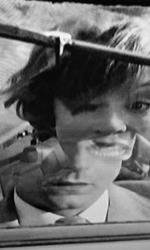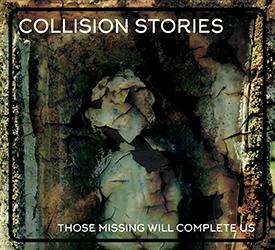Christmas arrived a few days late at chez Amnesiac, thanks to another great package of goodies from eh? Records. Bryan Day generously sent along three new cassettes for review and enjoyment. All signs point to maximum doses of both, if Revisited, Revisited, Revisited by L. Eugene Methe and Megan Siebe is any indicator.
Conceived and executed as "a deconstruction of Geoffrey Burgon's main theme for the 1981 TV mini-series Brideshead Revisited", Revisited takes shape in the form of a lovely ascending melodic line played on cello by Siebe, which is then supported and stretched by her violin and various electronic sounds and treatments from Methe.
What Disaster Amnesiac finds so lovely and compelling about this tape's sounds are the ways in which they float with such delicacy. As I've listened, it's felt to me at times as if I've been ensconced in some sort of timeless, beautiful chamber, surrounded and tickled by sublime, glassy sonic baubles.
The main melodic line repeats many times, bringing the perceptions back to its initial Chamber Music feel, and is then tweaked and torqued with subtle electronic treatments, with the violins singing along harmoniously. There's never a feel of exhaustion from these iterations throughout the four cycles that make up this piece though, only clearly stated Romanticism that resonates extremely well with the shorter days and longer evenings currently in effect within this hemisphere. A few days back, Disaster Amnesiac watched footage of surfers chasing freezing waves in the Icelandic winter; the sounds on Revisited, Revisited, Revisited have me thinking back to its shots for some reason. Perhaps it's the way in which this piece moves with such stately, oceanic pacing. Anyway, I figure that this tape's vibes are exceedingly worthy of those types of soundtracks. Surely, though, Revisited's sounds would enhance the moods of any given mood or movie.
Packaged with a mysteriously delicious cover photo, clearly legible font on the J-card, and cool additional artwork on the cassette itself, to match and enhance its incredible sound world, Revisited, Revisited, Revisited is one not to miss. Yet another bullseye at the target of creative, individualistic musical production within the current scene from eh? Records!
Keep your tape heads clean and stay tuned for words on two more releases soon.
Conceived and executed as "a deconstruction of Geoffrey Burgon's main theme for the 1981 TV mini-series Brideshead Revisited", Revisited takes shape in the form of a lovely ascending melodic line played on cello by Siebe, which is then supported and stretched by her violin and various electronic sounds and treatments from Methe.
What Disaster Amnesiac finds so lovely and compelling about this tape's sounds are the ways in which they float with such delicacy. As I've listened, it's felt to me at times as if I've been ensconced in some sort of timeless, beautiful chamber, surrounded and tickled by sublime, glassy sonic baubles.
The main melodic line repeats many times, bringing the perceptions back to its initial Chamber Music feel, and is then tweaked and torqued with subtle electronic treatments, with the violins singing along harmoniously. There's never a feel of exhaustion from these iterations throughout the four cycles that make up this piece though, only clearly stated Romanticism that resonates extremely well with the shorter days and longer evenings currently in effect within this hemisphere. A few days back, Disaster Amnesiac watched footage of surfers chasing freezing waves in the Icelandic winter; the sounds on Revisited, Revisited, Revisited have me thinking back to its shots for some reason. Perhaps it's the way in which this piece moves with such stately, oceanic pacing. Anyway, I figure that this tape's vibes are exceedingly worthy of those types of soundtracks. Surely, though, Revisited's sounds would enhance the moods of any given mood or movie.
Packaged with a mysteriously delicious cover photo, clearly legible font on the J-card, and cool additional artwork on the cassette itself, to match and enhance its incredible sound world, Revisited, Revisited, Revisited is one not to miss. Yet another bullseye at the target of creative, individualistic musical production within the current scene from eh? Records!
Keep your tape heads clean and stay tuned for words on two more releases soon.





























